Why do cucumber leaves turn yellow and what to do about it
Many gardeners face the problem of yellowed leaves in cucumbers: this culture can be very capricious in care. There are many reasons why this happens - from incorrect planting dates to exposure to fungal microorganisms.
How to get rid of yellowness on the leaves and save the harvest? A detailed guide to action is in our article.
The content of the article
Causes of yellowing of cucumber leaves
Numerous factors provoke the problem: improper watering, lack of nutrients, damage by diseases and pests, adverse weather conditions.
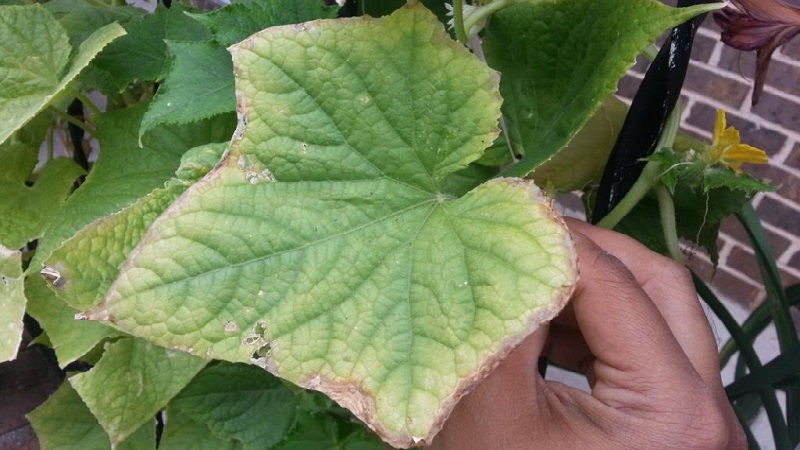
Watering errors
Cucumbers may experience a lack of moisture or excess moisture... Plants require different amounts of water depending on the growth phase.
Reference. Before the beginning of fruiting, vegetables are watered every 3-4 days. After - more often, after 1-2 days.
In the heat, cucumbers are irrigated abundantly every day, and in rainy weather, watering is reduced so that the bushes do not rot.
Sunburn
If water drops fall on the leaves, they act as a lens through which the sun's rays burn the plant. As a result of burns, the leaves turn yellow and curl... Therefore, when watering, especially in the heat, the foliage is lifted and moistened at the very roots.
Low temperatures
Adequate heat is important for cucumbers to grow... Summer in central Russia, and even more so in Siberia and the Urals, is not always hot: at low temperatures, the development of culture stops and the leaves turn yellow. To prevent this from happening, cucumbers are covered with a film or other non-woven material during cold weather.
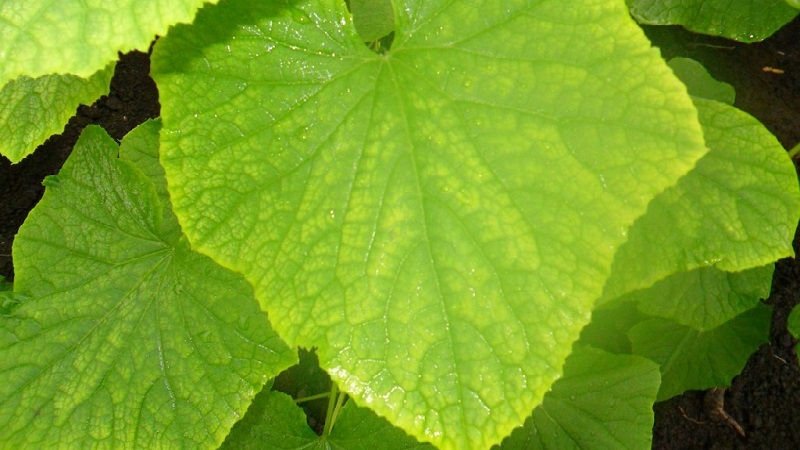
Lack of fertilizer
Depending on the place of yellowing of the leaves, they judge lack of a particular nutrient:
- if the leaves turn yellow evenly around the edges, the plant lacks potassium - it is added to the soil when the fruits ripen for their normal growth and development;
- uniform pallor indicates a lack of nitrogen - it accelerates the growth of green mass, therefore, seedlings are fertilized with them or introduced into the soil after rooting;
- the leaves turn yellow, and the veins remain dark green - there is not enough iron or manganese, the problem is solved by root dressing with a solution of ferrous sulfate and a solution of manganese, respectively.
Root damage
If the root system of cucumbers is damaged, it does not supply the bushes with nutrients in full force and the leaves begin to turn yellow. Therefore, seedlings are dived into the ground carefully, and caution is exercised when loosening and weeding.
Diseases
Even with proper care, cucumbers are prone to disease.
The most common ones:
- powdery mildew - white bloom appears on the leaves in the form of spots, similar to flour;
- root rot - part of the root dies off, then the entire root system withers away, the stem becomes thinner;
- anthracnose - yellow-brown spots and pink bloom appear on the green mass, the bushes quickly darken, the fruits wrinkle;
- peronosporosis (downy mildew) - appears with yellow-green spots and light green bloom on the upper part of the leaves.
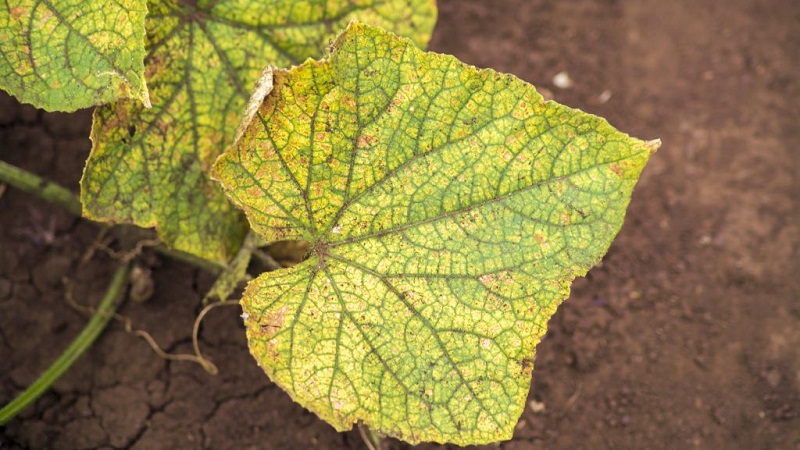
If signs of illness are found, they get rid of it as quickly as possible.... Among the universal and most effective drugs are Bordeaux mixture, Fitoverm, fungicides (agents against fungal diseases) “HOM”, “Fundazol”, “Previkur”.
Weak pollination of cucumbers
This problem most often occurs in greenhouses.as many varieties require insects for pollination. In warm weather, the doors of the room are kept open to provide access to plants for bumblebees and bees.
Reference. The attention of insects is attracted by melliferous plants (basil, catnip, snakehead), which are planted next to cucumbers.
Why leaves turn yellow and curl
If the leaves not only turn yellow, but also curl, are deformed, this indicates serious problems.
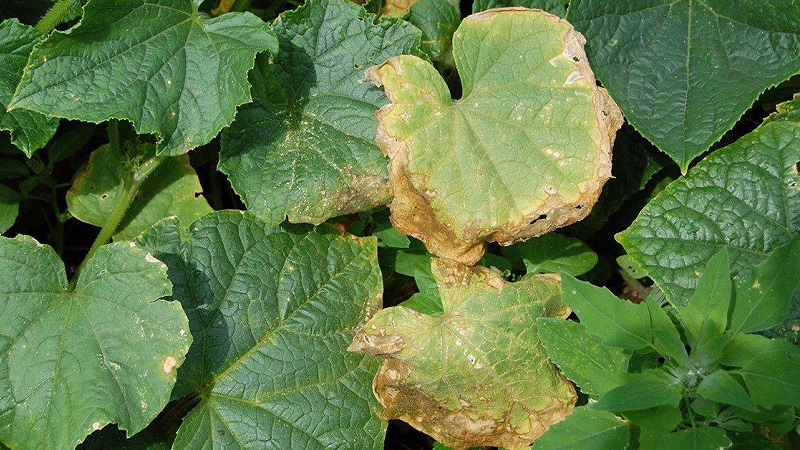
The lower leaves turn yellow
Often, the lower leaves change color not as a result of improper care or illness, but from old age. Plants give more energy to the upper leaves and fruits.
Other reasons provoking this problem:
- lack of lighting;
- hypothermia;
- improper watering;
- fungal infection;
- deficiency of minerals (potassium, magnesium, phosphorus).
Leaves and ovaries turn yellow
It so happens that the green mass changes color along with the ovaries. In order not to lose all the harvest, it is important to identify the cause of yellowing in time:
- congestion with ovaries;
- lack of sunlight;
- low temperatures;
- lack of nutrients, usually potassium and nitrogen.
The edges of the leaves turn yellow
There are several reasonswhy the leaves turn yellow and dry at the edges:
- illness;
- lack of moisture;
- lack of micro and macro elements.
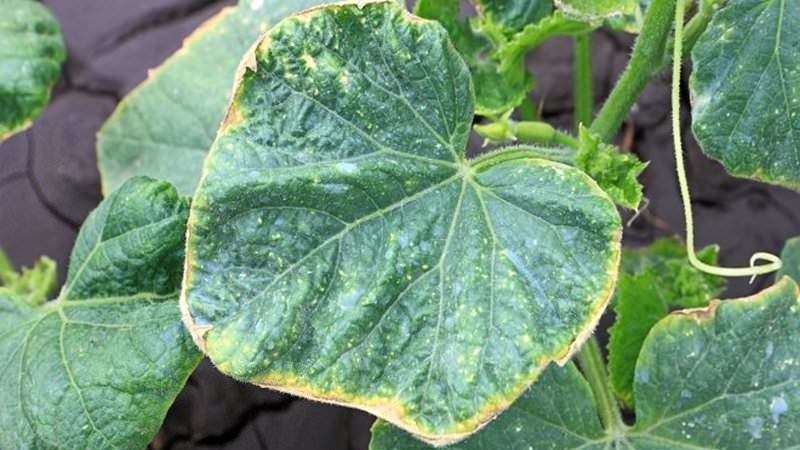
Seedling leaves turn yellow
Basically, the reasons for this are the same as in adult plants., but there are also specific ones:
- waterlogging or lack of moisture;
- lack of fertilizers (after the appearance of 2–4 leaves, the seedlings are fed with a complex nitrogen composition);
- too small containers for seedlings.
How to save the harvest
The principles of cultivating cucumber bushes differ depending on from the place of planting vegetables.
In the greenhouse
Growing cucumbers indoorfollow the rules carefully care for them:
- Temperature regime... Optimal values are maintained at + 20 ... + 22 ° C during the day and at least + 16 ° C at night. Soil temperature - + 16 ... + 18 ° C.
- Watering mode... Cucumbers are moisture-loving plants and require regular irrigation, especially in hot weather. Do not use cold water for this: it is preheated in the sun. It is important not to overflow vegetables, otherwise the roots will rot and it will no longer be possible to restore them.
- Top dressing... Together with moisture, cucumbers from the soil absorb substances necessary for growth and flowering. When the soil is depleted, the growth process stops, the plant weakens, and the risk of disease increases. To prevent this from happening, fertilizers are timely applied to the soil. The soil is being prepared in advance, 2 weeks before picking seedlings or sowing, adding 1 m2 25 kg of manure or 10 kg of compost, 40 g of superphosphate, 40 g of potassium sulfate, 15 g of magnesium sulfate. After the garden bed is well moistened. After a week, add 30 g of ammonium nitrate per 1 m2, dug up again and spill water. If the soil is prepared in the fall, then it is enriched with manure, in the spring - with humus or peat.
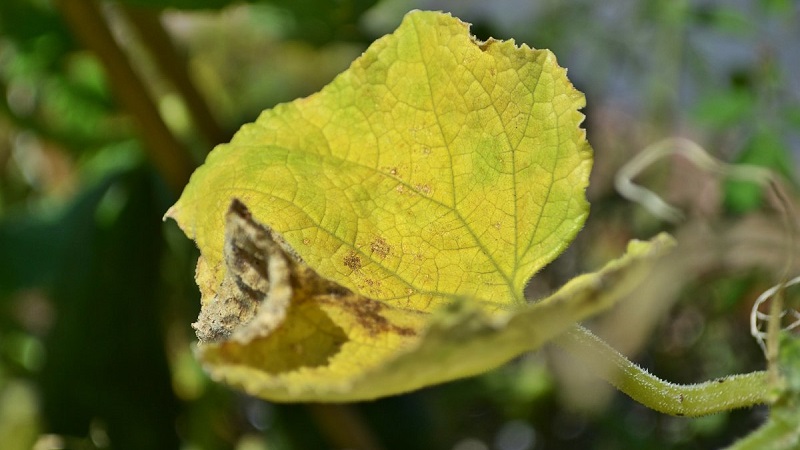
In the open field
To harvest a rich and high-quality harvest of cucumbers from the garden, follow simple rules for the care of the culture:
- During frosts and cold snaps the culture is covered with a film to prevent hypothermia.
- Cucumbers on time watered, preventing the soil from drying out and waterlogging.
- Plants treated for pests... From aphids use a solution of ash, from ticks - an infusion of onion peel. Dill is planted in the beds: its flowering attracts ladybirds - natural enemies of aphids and other harmful insects.
- If cucumbers are planted in the same places, they are on time are fed with mineral and organic fertilizers to replenish nutrient reserves.
Preventive measures
Prevention will help avoid yellowing of leaves in cucumbers:
- The earth is mulched: it will keep moisture and warmth.Hay, straw or dried grass are used as mulch. The main thing is the absence of seeds and rot.
- Do not allow dense planting cucumbers so that all the leaves have enough sunlight. It is undesirable to plant a crop every year in the same place.
- Follow the rules of crop rotation: ideal predecessors - onions, cabbage, legumes, root vegetables. It is not recommended to plant cucumbers where zucchini or pumpkins grew.
- Culture fertilize regularly to maintain the quality of fruits and increase yields.
- Bushes spray solution of potassium permanganate, soda or ash infusion.
- Signs of disease are detected in a timely manner and pest damage: these problems are easier to prevent in the beginning.
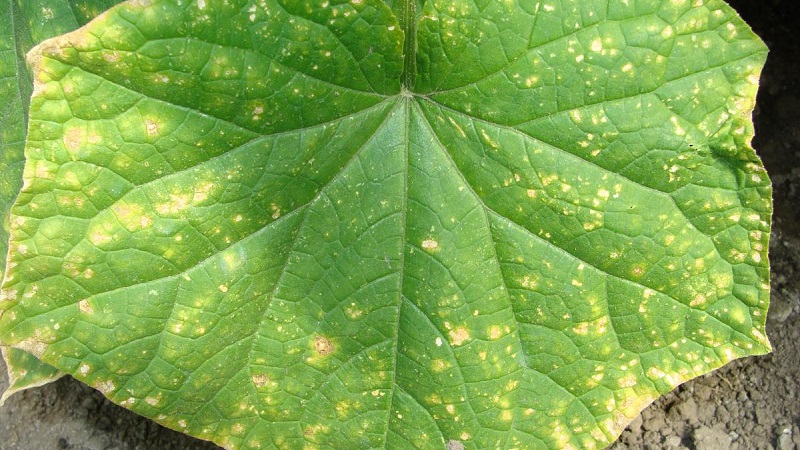
Experienced Farmer Tips
In addition to chemicals, gardeners use folk remedies to combat yellowing and wilting of cucumber foliage:
- Ash solution... For cooking, take 700 g of ash per 10 liters of water, insist for 2 days. Cucumbers are sprayed 2-3 times a month.
- Potassium permanganate solution... At the first symptoms of yellowing, the bushes are sprayed with a weak solution of potassium permanganate.
- Soda solution... For 10 liters of water take 1 tbsp. l. soda, the plants are watered under the root with a solution to get rid of fungal diseases.
- Onion infusion... 100 g of onion husks are added to 10 liters of water, brought to a boil and left overnight under a lid. Strain in the morning, dilute in a ratio of 1: 4. Leaves are sprayed with this universal solution and watered under bushes from pests.
- Infusion of cow dung... Mix 3 kg of manure with 10 liters of water, insist for 3 days, then filter and dilute in a ratio of 1: 3. They are used for spraying and as root dressing. The tool helps well in the fight against powdery mildew.
- Milk serum... For 10 liters of water, take 2 liters of milk whey or kefir. The composition is sprayed on the bushes. If you add 100 g of sugar to the solution, the product will accelerate the ripening of the fruit.
Conclusion
Compliance with simple rules for watering, crop rotation, timely fertilization reduce the risk of spoilage of cucumber leaves and increase productivity. The most effective method of combating yellowness on the leaves is prevention: do not overcool the bushes, systematically destroy weeds, remove all plant residues after harvesting, and disinfect the beds. Then you don't have to use harmful chemicals to process cucumbers.